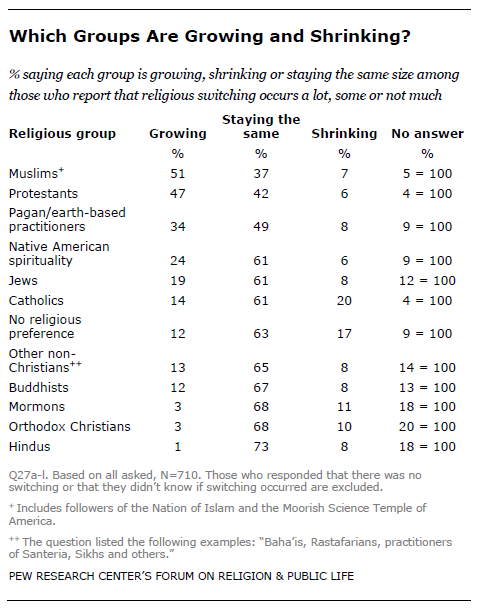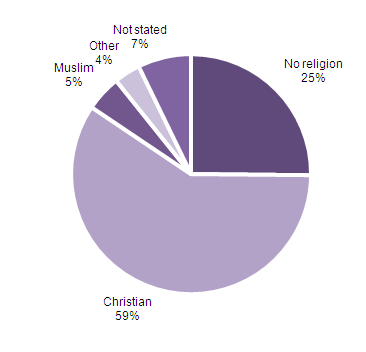[You can read part one of this entry, here.]
05. Ginger Strivelli, School Bibles, and Buncombe County Schools: The story began at the end of 2011 when North Carolina Pagan Ginger Strivelli challenged her child’s school’s policy regarding the distribution of religious materials. Strivelli felt that the manner in which Gideon Bibles were made available violated the Establishment Clause, and ostracized non-Christian students who didn’t want to use a special break to obtain a Bible. Strivelli, along with local activist and Pagan leader Byron Ballard, and a growing coalition of local residents, made clear that the board needed to remain neutral on matters regarding religion. So began a year of contentious school board meetings, death threats, and mainstream media coverage.
“For awhile there seemed to be a balance of people who supported and opposed the policy. But then some preachers got up and made direct personal attacks to Ginger. They claimed she was the only one with a problem with the bible distribution. Little do they understand how many pagans in the county that fear coming out and speaking up. And after that meeting, I completely understand! Then it got even worse when a preacher spoke up that only bibles should be allowed in schools. And that is when the preaching began. People after people felt the need to quote scripture. One guy even read from the bible and stated that if we were real pagans that our ears would burn after listening to the scripture. - Angela Pippinger of The Pagan Mom Blog.
Eventually Buncombe County Schools passed a new religion policy that stressed neutrality, and will allow distribution of religious materials, but only once a year, along with non-religious community groups, and after regular school hours. All of these changes came about because one Pagan mom decided to speak up, and her bravery inspired a community to hold true to the secular and pluralistic principles our country was founded on.
04. Pew Forum’s Landmark Prison Religion Survey (and How That Affects Pagans): In March of this year the Pew Forum on Religion and Public Life released the findings of a 50-state survey of prison chaplains. The survey, which was endorsed by the American Correctional Chaplains Association, interviewed 730 prison chaplains, and has a lot of interesting things to say about religion in the American prison system. At first glance, there are no major bombshell revelations to drive the news cycle, leading to initial headlines like “a lot of religion goes on behind bars.” However, if you start digging into the data, especially the section on what chaplains think about the inmate’s religious lives‘, there’s a lot there that should be of concern to modern Pagans, particularly Pagans engaged in prison outreach and chaplaincy work.
Pagan chaplain Patrick McCollum, who testified before the US Commission on Civil Rights on prisoner’s religious rights in 2008, was deeply involved in this survey and helped shape some of the survey’s questions, and helped shift “the perspective of the main researcher’s goals in ways that I feel benefited our community and minority faiths in general.”
“The inclusion of Pagan & Earth Based religions as a category in the survey carries several huge benefits for us as a community. First, for many years, correctional systems, courts, and other governmental agencies have been able to deny us our rights, by simply making the argument that we either don’t really exist, or that if we do, we are so insignificant in numbers that there is no need to legislate or accommodate in our favor. Now with the survey, that argument is irrefutably null and void.” – Patrick McCollum
The data given to us here by the Pew Forum is a boon. Even taking into account the Christian lens through which most of this data was obtained and filtered through, it gives us needed information is discussing and addressing the needs of Pagan prisoners. It underscores the challenges, and affirms what many already suspected: that the Pagan population in prison is growing, that the institutional chaplaincy is disproportionately Christian and conservative in makeup, that extremism (whatever its true extent) is an ongoing concern, and that we simply don’t have the volunteers or institutional muscle in place to properly address prisoner’s needs. Just as it is on the “outside” our growth continually outstrips the pace in which we can train clergy or build institutions and services. In short, we have a lot of work to do.
03. Chaplaincy for Pagans in Canadian Prisons: The controversial move this Fall by Canadian Public Safety Minister Vic Toews to retract a paid position for a Wiccan prison chaplain was merely a harbinger of much bigger things. In October the CBC reported that Toews, who oversees Canada’s penitentiaries, eliminated all paid part-time chaplain services, effectively making government prison chaplaincy a Christian-only affair.
“Inmates of other faiths, such as Muslims, Sikhs, Buddhists and Jews, will be expected to turn to Christian prison chaplains for religious counsel and guidance, according to the office of Public Safety Minister Vic Toews, who is also responsible for Canada’s penitentiaries. [...] Toews’ office says that as a result of the review, the part-time non-Christian chaplains will be let go and the remaining full-time chaplains in prisons will now provide interfaith services and counselling to all inmates.”
Toews’ office said in a statement to the CBC that “[Christian] chaplains employed by Corrections Canada must provide services to inmates of all faiths.” This lead one Sikh chaplain to ask the obvious question: “How can a Christian chaplain provide spirituality to the Sikh faith, because they don’t have that expertise.”
So from this point forth, all non-Christian chaplaincy services to federal prisons must either be provided by volunteers, or the prisoners: Wiccan prisoners, Pagan prisoners, Buddhist prisoners, First Nations prisoners, must all turn to the full-time (Christian) chaplains for spiritual guidance and resources. I wasn’t overly surprised when Toews decided to engage in a little discriminatory Witch-kicking, our community has weathered those slings and arrows for years, but this is something far more audacious. Toews and his office are essentially doubling down, saying that a full-time Christian chaplaincy is enough to handle all faiths, no matter what their history or relationship with Christianity might be. It’s stunning. Whether he’ll be allowed to get away with it is, I suppose, up to the Harper administration and Canadian voters.
02. Census Data From Australia and the UK Show Paganism’s Growth: In 2011 I reported on efforts in Australia and Britain to encourage more accurate census counts of Pagans by asking respondents to use a uniform Pagan-[tradition/faith] format. This year we got to see the fruits, if any, of these efforts. First, Australia’s numbers came in, with over 32,000 modern Pagans (up from around 29,000 in 2006), then, we got to see the number of England and Wales where over 80,000 individuals identified with some form of modern Paganism (depending on how forgiving you want to be with labels). In addition, the base number of people identifying as “Pagan” shot up to nearly 60,000. This is about double the numbers from the last British census.
“Compared with the 2001 Census the most significant trends were an increase in the population reporting no religion – from 14.8 per cent of the population in 2001 to 25.1 per cent in 2011, a drop in the population reporting to be Christian – from 71.7 per cent in 2001 to 59.3 per cent in 2011, and an increase in all other main religions. The number of Muslims increased the most from 3.0 per cent in 2001 to 4.8 per cent in 2011.”
These figures point to some success for the Pagan Dash campaign, though they were not the far larger estimates many were hoping for. Still, this shows encouraging growth for modern Paganism, particularly in England and Wales. The growth of Pagan and minority faiths, along with the rapid increase of those who claim no particular religion point toward an imminent re-alignment of the status quo when it comes to matters of faith and belief in the Western world. The new census data will provide a lot of new information for Pagan activists, and for Pagan scholars, and may have repercussions we haven’t anticipated yet.
01. The Rise of Post-Christian Elections in the United States: After the 2012 elections here in the United States I posited that this was a post-Christian election, and that the results could be a glimpse into the future of America’s electorate. Now, as information from the election is further dissected and analyzed, it’s becoming increasingly clear that something significant has indeed shifted in the religious outlook of our voting public. The Public Religion Research Institute calls it the “end of a white Christian strategy.”
“The foundation of Romney’s base consists primarily of white evangelical Protestants, who constitute 40% of his coalition. Obama’s coalition rests on two very different groups: minority Christians—a group that includes black, Asian, Hispanic, and mixed-race Christians—(31%) and the religiously unaffiliated (25%). [...] Notably, Obama’s religious coalition resembles the religious composition of younger voters, while Romney’s religious coalition resembles the religious composition of senior voters. For example, 26% of Millennial voters are white Christians, compared to 72% of senior voters.”
The unaffiliated were a big chunk of Obama’s religious support, and a whopping 70% of “nones” and 74% of “others” (which would include us Pagans) voted for the President. For all the analysis focused on race or gender during this election, it’s become clear that it is also disastrous for any candidate to so completely alienate non-Christian voters (it should be noted that Obama also garnered nearly 70% of the Jewish vote as well, despite efforts to undermine that support). The more pluralistic and religiously diverse American becomes, the harder it will be to ignore non-Christian voices.
Sifting through the results from November can start to see the realignments. Hawaii sends the first Buddhist, Mazie Hirono, to the US Senate, and the first Hindu, Tulsi Gabbard, to the House. Washington state approved gay marriage by referendum, an initiative that I paid particular attention to because it would be decided by the religiously unaffiliated majority there. In that piece from September I said that: “it’s Washington that I’m most interested in because of the trends that point to the “nones” in the Pacific Northwest being more like “us” Pagans in inclination and spiritual orientation. If you want tea leaves to read over what a “Pagan” vote might look like, this might be our chance to witness it in action.”
I think we’re going to see a lot more elections that look like this one. That doesn’t mean that Democrats automatically win all the time, or that Republicans are always doomed to lose, just that the playing field will never again be like it was in the 1980s or 1990s. The slowly shifting demographics have started to turn a corner, and savvy politicians, no matter what their political orientation, will adapt to these emerging realities. Yes, that means reaching out to racial minorities, and women, and younger voters, but it also means reaching out to the “nones” and the religious “others” instead of banking everything on the evangelical Christian vote (or the Catholic vote for that matter).
Welcome to the beginning of the post-Christian American future.
That wraps up our top ten news stories about or affecting modern Paganism in 2012. Thanks for reading, and I hope you’ll join us for another year of sifting through the news and views of interest to our communities. See you in 2013!




